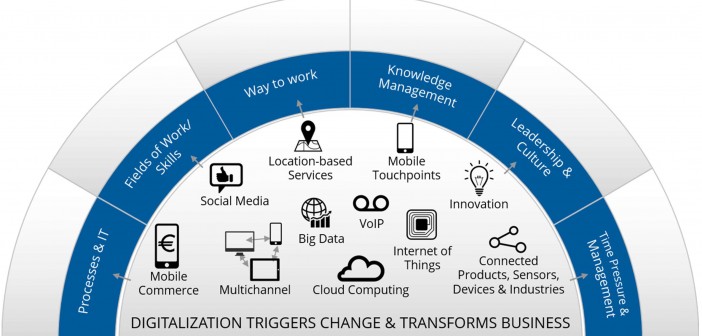In my last blog post, I talked about bringing all the apps in your tech stack to the table so that we could figure out how this whole puzzle fits together … well, at least, make the determination if they will ever fit together. That’s what industry calls technology convergence in the broad sense to get small business to digitally transform and become part of the online world. We won’t get to that in this blog post but we will in the next one. There are some things that need to be done first to create the motivation and mindset of why it has value to do it at all.
How Small Business Matures … or Not
For the small business, we are talking about becoming a digitally mature organization. In our case study, we can illustrate what I mean by a digitally mature organization. This small business has three profit and loss (P&L) centers. Each center is a business entity unto itself. They are veritable silos of activity. Here are some observed facts:
- The hiring process is unique to each center. There is no HR management solution.
- The workflow process does not feed a single Some feed an in-house developed CRM and other workflows feed their data directly into the accounting tool.
- There are two separate timecard accounting systems that must be manually reconciled to determine truth in invoice charges to the customer. There is always some customer push back on invoices presented for payment.
- Data repositories are spread between a business Google Drive account, Dropbox and local hard drives, none of which are not cross-connected or indexed via an internal search engine.
- The corporate website only has two of three P&L activities described in it.
- Social media is not part of the marketing plan.
For a custom software development house, they are digitally aware but an incredibly immature digital entity. Yet, the corporate objective is to grow by a factor of two in the next twelve months.
What Needs Fixed
The corporate culture, in this case, must be developed because it simply doesn’t exist today. The business has been run as a sole proprietorship with the business owner providing all the direction. He is the technical authority, chief marketing officer, and sole decision maker. That’s not unusual and, in fact, typical of many small start-ups. He has overstepped his span of control, his time is not his own, and many necessary actions with existing customers are ignored. It is not a customer-centric organization.
There is no leadership structure. Two of the P&L centers have supervisors in name but not in practice. The third P&L is an ad hoc group of software developers that act independently with minimal leadership from the owner. The growth and success of all businesses ride on the back of its employees. There are discontent and lack of job satisfaction. The supervisors are the people with the most experience and as such are the primary doers of work and not managers of work. In many cases, the owner is simply not available because he is on-site with a new customer deploying the custom software developed for their needs.
These P&L supervisors observe the weak nature of relationships with some customers but kick the problem to the owner mostly because that is the culture of the company. More often than not, the action doesn’t get done until it turns into a crisis. The CRM tool used is ineffective with work orders missing to go along with invoices. The data transfer from CRM to the accounting tool is regularly overridden by manual intervention to provide discounts and correct errors in their preparation because there is no QA of the process.
Technical Convergence will Follow in the Steps of Digital Maturity
The evidence of digital awareness is everywhere. However, it is a collection of stuff that neither automates or improves the corporate operations. Digital maturity cannot be achieved without its champions in the trenches dedicated to making it happen.
All of these things must be addressed before this company has any chance of sustaining growth and achieving its sole marketing objective of doubling in size over the next 12 months.
I am engaged with the owner on all these challenges. The usual suspects have surfaced as obstacles. The giving up of direct control and acceptance of change tops the list. Cash flow to allow for hiring the right people that are leaders and not “in the trenches” workers is a major question. Standardizing workflows and establishing communication paths across P&L’s is a painstaking process but necessary step and is underway.
Is your business ready for its digital future? The power of organizational integration into one smooth operating machine cannot be discounted in the face of technical convergence. The software solutions and appliances are only tools in the hands of the corporate leaders and employees. The human effort is essential to making it all work together.




